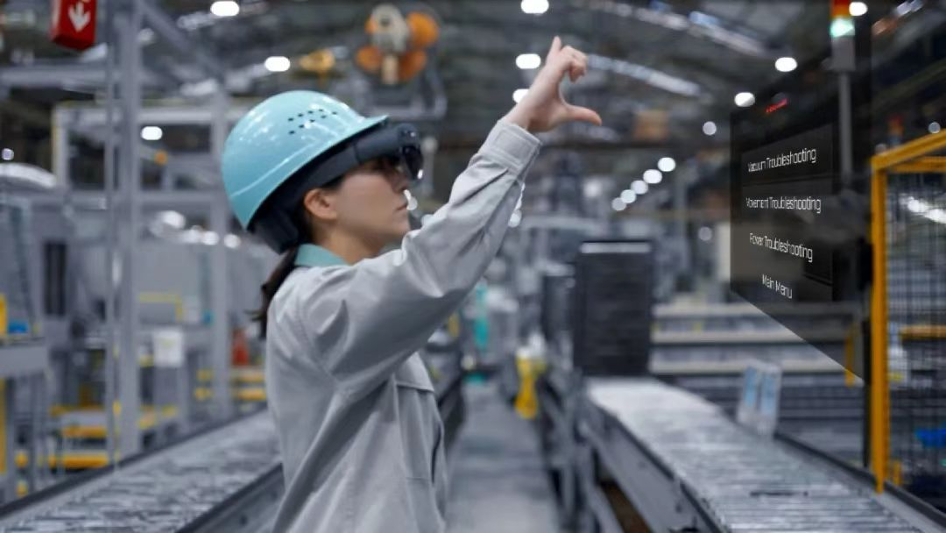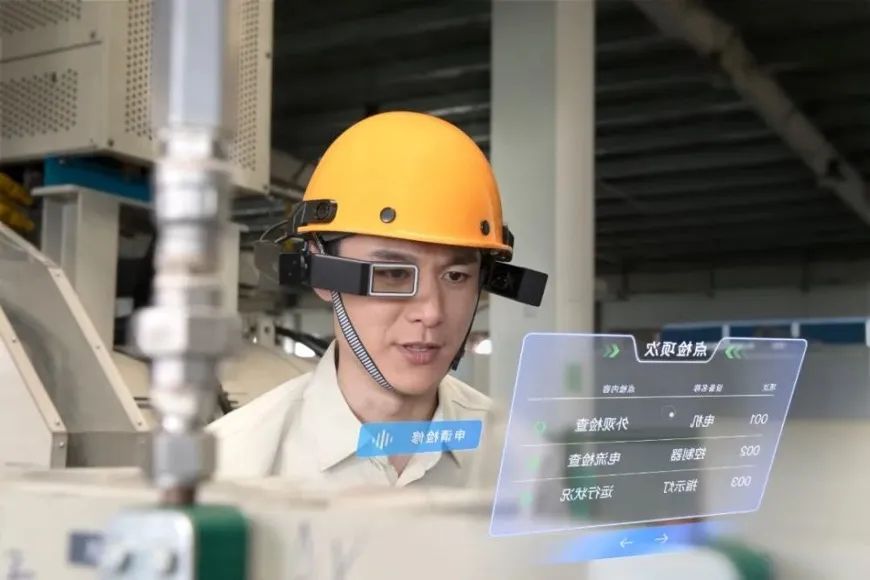The innovation of human engineering technology has gone through the steam age, electrical age, information age and Internet age. As a more advanced form of the industrial Internet, the industrial metaverse is attracting widespread attention from all walks of life.
As early as 2013, in Industry 4.0 proposed by Germany, virtual-real fusion simulation technology was considered as the core of intelligent manufacturing. There is a view that the “industrial metaverse” is constructed by organically integrating cyber-physical systems, digital twins, and 5G-induced applications such as AR, VR, AI computer vision, and low-latency remote control in accordance with the concept of “metaverse”. .
Compared with the consumer metaverse, the industrial metaverse pays more attention to the process of “from virtuality to reality”, focusing on solving specific problems in specific scenarios, and will cover the entire chain of industrial production. The application value of the metaverse in the industrial field may be far greater than that of consumption field.
What is the current status of the Industrial Metaverse, and where will it go in the future?
01
Big collective bets
At present, the battlefield of the Metaverse is full of gunpowder. Although people live, play, and work in the virtual world sounds like a beautiful blueprint, in reality, the eyes of global giants such as Microsoft, Nvidia, and Meta are not limited to ordinary consumers. This is one of the reasons why commercial applications of the Industrial Metaverse develop faster.
According to foreign media reports, Microsoft’s “Industrial Metaverse” plan is taking shape, and a new team has been established within the company called “Industrial Metaverse Core”, which will focus on creating immersive software interfaces for Industrial control systems that power applications such as power plants, industrial robots, and transportation networks.
For example, in cooperation with Kawasaki Heavy Industries, Microsoft uses AR to create a digital workspace that can replicate the real world, thereby speeding up maintenance and starting new production lines and other processes. Workshop workers at Kawasaki Heavy Industries can wear Microsoft HoloLens headsets to assist in production, maintenance and supply chain management.

Figure | Workers wearing Microsoft HoloLens headsets
With the help of AR, workers can more quickly discover the cause of a failure on the production line. At the same time, professional maintenance personnel can no longer go to the scene in person, but directly guide workers wearing headsets to repair damaged parts through AR visual prompts.
It can be said that from a single screw to the entire factory, all the details of the physical world can be replicated in the virtual space. This technology can also allow workshop managers to remotely manage newly opened production lines and effectively solve supply chain problems.
02
How far is the manufacturing industry from the metaverse
my country is the only country in the world that has all industrial categories, and rich manufacturing application scenarios are waiting for the moistening of the metaverse trend.
The “Virtual Reality Industry Development White Paper 5.0” issued by the Ministry of Industry and Information Technology clearly stated that “the industrialization of virtual reality technology should be promoted through financial funds, and the application of virtual reality technology for key industries such as industry, culture, and education should be supported.”

Figure | Employees wear AR glasses to overhaul equipment
Beginning in 2022, many domestic governments have also begun to promote the forward-looking layout of the metaverse industry, and have successively introduced relevant supporting policies, established industrial parks, set up special funds, introduced relevant enterprises and talents, and guided the development of the metaverse industry.
But for traditional manufacturing, no matter how esoteric the term is, only the technology that can be applied to the factory has real value and significance. According to data released by the China Academy of Information and Communications Technology, the scale of China’s digital economy will reach 39.2 trillion yuan in 2020, accounting for 38.6% of GDP. Traditional industries account for a larger proportion of GDP. In the process of digital transformation, how far is the traditional manufacturing industry from the Metaverse?
At present, many domestic enterprises are moving closer to intelligent manufacturing. As a mobile phone industry that relies heavily on fully automated production lines, it is one of the typical ones.
At present, the first phase of Xiaomi Smart Factory has been offline for production, and the second phase of the factory is also expected to start production by the end of 2023. The Xiaomi smart factory is a highly intelligent “black light factory”. It can realize full-automatic unmanned production inside, and only manual material supply. It is truly automated, informatized, and intelligent, with an annual output of one million units.
In addition, automobile manufacturing also requires a highly automated intelligent production line. Domestic automaker Geely Automobile has extensively used cyber physics systems in new car design, process development, and trial production verification, greatly reducing the cycle of new car development.
Well-known domestic companies such as PetroChina, State Grid, Baosteel, and Yili have begun to adopt AR remote assistance solutions for application scenarios such as logistics warehousing, energy and power, and fast-moving consumer goods manufacturing.
With the gradual maturity of metaverse-related technologies, the application scenarios of the industrial metaverse will cover the entire life cycle of products from R&D and design to sales and after-sales. “Virtual-real collaboration” guides and promotes industrial process optimization and efficiency improvement to achieve cost reduction efficiency, efficient synergy, energy saving and emission reduction.
03
The “Future Form” of the Industrial Metaverse
Some industry experts predict that the industrial metaverse is expected to achieve a breakthrough in the underlying technology by 2027, achieve a leapfrog transformation by 2032, and take shape by 2032.
According to Tao Dacheng, senior vice president of JD Group and director of the Exploration Research Institute, Metaverse has gradually divided into two paths in the implementation of the real economy. The first is the transformation of the production paradigm, “creating a high-precision digital twin scene , to map the problems in the real world into the metaverse, find solutions in the simulation in the metaverse, and then deploy the optimal solution back to the real world.” He believes that this can greatly reduce the tuning and trial and error links in the physical world, Achieve the effects of shortening the research and development cycle and improving innovation ability.

Figure | Hyundai car engineers use AR headsets to view car parts
The second is a shift in the optimization paradigm. In his view, a major pain point of traditional manufacturing is that each information island in the lengthy production environment can only be optimized at a single point, making it very difficult to improve efficiency. The industrial metaverse will break the data island, express the whole link information with a unified metaverse information model, and upgrade the single-point optimization paradigm to full-link collaborative optimization.
“From virtual to real” industrial metaverse
Another point of view is that the industrial metaverse is a collection of capabilities that use digital technology to reconstruct and recreate the social and natural attributes in the real world. It not only realizes the upgrading of productivity, but also brings a business model with the theme of digital integration. And the transformation of industrial structure opens up a window of opportunity for entities at different levels to share the growth dividend of the digital economy.